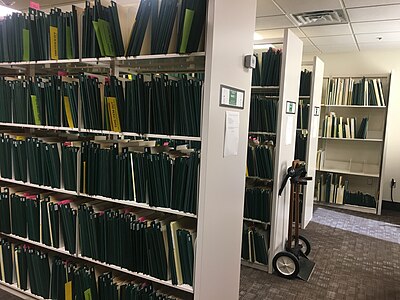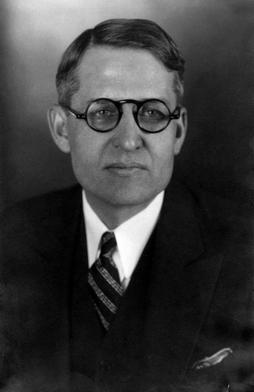
Harvey Fletcher was an American physicist. Known as the "father of stereophonic sound", he is credited with the invention of the 2-A audiometer and an early electronic hearing aid. He was an investigator into the nature of speech and hearing, and made contributions in acoustics, electrical engineering, speech, medicine, music, atomic physics, sound pictures, and education. Following his death, he was credited with collaborating with his doctoral advisor, Robert Millikan, on the Nobel-prize winning oil drop experiment which first determined the charge of the electron.

Leonard James Arrington was an American author, academic and the founder of the Mormon History Association. He is known as the "Dean of Mormon History" and "the Father of Mormon History" because of his many influential contributions to the field. Since 1842, he was the first non-general authority Church Historian for the Church of Jesus Christ of Latter-day Saints, from 1972 to 1982, and was director of the Joseph Fielding Smith Institute for Church History from 1982 until 1986.

Orson Hyde was a leader in the early Latter Day Saint movement and a member of the first Quorum of the Twelve Apostles. He was the President of the Quorum of the Twelve Apostles of the Church of Jesus Christ of Latter-day Saints from 1847 to 1875 and was a missionary of the LDS Church in the United States, Europe, and the Ottoman Empire.

William Earl McLellin was an early leader in the Latter Day Saint movement. One of the original members of the Quorum of the Twelve Apostles, McLellin later broke with church founder Joseph Smith.

The Latter-day Saints’ Millennial Star was the longest continuously published periodical of the Church of Jesus Christ of Latter-day Saints, and was printed in England from 1840 until 1970, when it was replaced by the church-wide Ensign. It was primarily aimed at British Latter-day Saints.

Church Historian and Recorder is a priesthood calling in the Church of Jesus Christ of Latter-day Saints. The role of the Church Historian and Recorder is to keep an accurate and comprehensive record of the church and its activities. His office gathers history sources and preserves records, ordinances, minutes, revelations, procedures, and other documents. The Church Historian and Recorder also chairs the Historic Sites Committee and Records Management Committee, and may act as an authoritative voice of the church in historical matters.
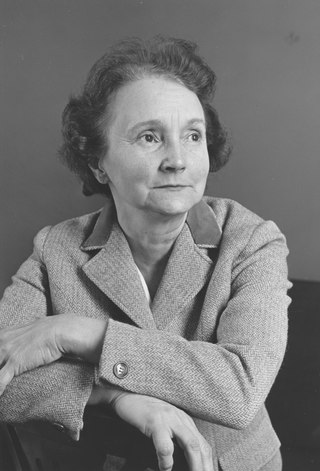
Alice Chalifoux was the principal harpist with the Cleveland Orchestra from 1931 to 1974 and was its only female member for twelve years. Chalifoux learned to play the harp from her mother, studying music at local schools before studying under Carlos Salzedo at the Curtis Institute of Music. She was an authority on his music and took over the Salzedo Summer Harp Colony after his death. She had a reputation as a specialist in orchestral harp technique and a master teacher. She taught at the Cleveland Institute of Music, the Oberlin Conservatory of Music, and the Baldwin-Wallace Conservatory of Music. She continued teaching harp until her death in 2008, at the age of 100. Chalifoux received two honorary degrees for her work. In her personal life, Chalifoux married John Gordon Rideout in 1937 and had one daughter.
The main campus of Brigham Young University sits on approximately 560 acres (2.3 km2) nestled at the base of the Wasatch Mountains and includes 311 buildings. The buildings feature a wide variety of architectural styles, each building being built in the style of its time. The grounds and landscaping of the campus won first place in 2005 in America in Bloom's campus division. Furthermore, views of the Wasatch Mountains, can be seen from the campus. BYU's Harold B. Lee Library, which The Princeton Review ranked as the #1 "Great College Library" in 2004, has approximately 8½ million items in its collections, contains 98 miles (158 km) of shelving, and can seat 4,600 people. The Spencer W. Kimball Tower is home to several of the university's departments and programs and is the tallest building in Provo, Utah. Furthermore, BYU's Marriott Center, used as a basketball arena, can seat almost 18,000 and is one of the largest on-campus arenas in the nation.
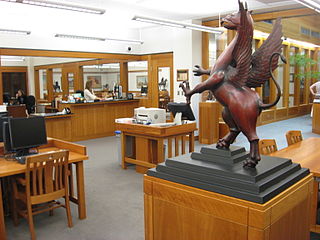
The L. Tom Perry Special Collections is the special collections department of Brigham Young University (BYU)'s Harold B. Lee Library in Provo, Utah. Founded in 1957 with 1,000 books and 50 manuscript collections, as of 2016 the Library's special collections contained over 300,000 books, 11,000 manuscript collections, and over 2.5 million photographs, among many other rare and unique research materials. Since its inception, the special collections have been housed in numerous places including the crawl space of a university building and a wholesale grocery warehouse. Since 2016, the special collections have been located on the first floor of the Harold B. Lee Library and is considered to hold "the finest collection of rare books in the Intermountain West and the second finest Mormon collection in existence".
The American Harp Society, Inc. (AHS) is a non-profit organization. Founded in 1962, the AHS is an organization of harpists with more than 3,000 members from all 50 states and 20 countries. The organization is currently led by President Lynne Aspnes, Chairman of the Board Elaine Litster, and Executive Director Kathryn McManus.
Sylvia Meyer was an American harpist who became the first female member of the National Symphony Orchestra. She was a founding member of the World Harp Congress.
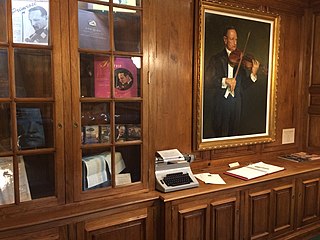
The Primrose International Viola Archive (PIVA) is the official viola archive of both the International Viola Society and American Viola Society. It is located in the Harold B. Lee Library at Brigham Young University. Scottish-American violist William Primrose started the archive with the donation of his many materials on the viola.

David Johnson Dalton was an American violist, author, and professor emeritus at Brigham Young University (BYU). He graduated from Eastman School of Music in 1961 and received his doctorate in viola performance in 1970 at Indiana University School of Music under William Primrose. As a faculty member at BYU, Dalton's main contribution was the establishment of the Primrose International Viola Archive, one of the largest viola archives in the world. Dalton's other significant positions include editor of the Journal of the American Viola Society, president of the American Viola Society, and president of the International Viola Society.
Mormon missionary diarists are the Mormon missionaries who kept records in the form of diaries and journals recounting their activities on behalf of the Church of Jesus Christ of Latter-day Saints in various parts of the world. Both male and female missionaries kept these diaries and were encouraged to do so by the church. Many of these documents have been donated to the Brigham Young University's Harold B. Lee Library, and since 2003, a large selection of these have been transcribed and digitized.

The Harold B. Lee Library (HBLL) is the main academic library of Brigham Young University (BYU) located in Provo, Utah. The library started as a small collection of books in the president's office in 1876 before moving in 1891. The Heber J. Grant Library building was completed in 1925, and in 1961 the library moved to the newly constructed J. Reuben Clark Library where it stands today. That building was renamed to the Harold B. Lee Library in 1974.
William Albert "Bert" Wilson was a scholar of Mormon folklore. The "father of Mormon folklore" helped found and organize folklore archives at both Utah State University (USU) and Brigham Young University (BYU). He directed the folklore archive at USU from 1978 to 1985, and chaired the English department at BYU from 1985 to 1991. He and his students collected jokes, legends, stories, songs, and other information to add to the Mormon folklore archives.

The David O. McKay School of Education (SOE) at Brigham Young University (BYU) specializes in teaching, administration, communication disorders, and educational inquiry. It is located in three buildings on BYU's campus in Provo, Utah, the David O. McKay Building, the John Taylor Building, and the George Albert Smith Fieldhouse. It was ranked number 84 in the United States for best education schools for 2021.

Paul Cannon Pollei was an American pianist and member of the piano faculty at Brigham Young University (BYU). Pollei retired as a faculty member at BYU in 2001. During his time at BYU, he co-founded the American Piano Quartet, which remains active after his death. He was an international ambassador for piano music, as well as a frequent lecturer and teacher. He founded the Gina Bachauer International Piano Foundation in 1976, serving as director until 2013. The foundation sponsors many competitions and festivals. Pollei was also active on many advisory boards and a member of many organizations, including the Music Teachers National Association (MTNA). He was given an award in 2002 for his work in the arts. Pollei wrote about piano pedagogy and instruction for various professional journals in the United States and authored two books on the subject.
Rowan S. Taylor (1927–2005) was an American composer and conductor. Taylor composed over 250 symphonies in addition to his concertos, songs, chamber works, operas, choral works, and ballets. His works have been performed all over the world. Taylor received both his bachelor's and master's degrees from Brigham Young University. He studied at UCLA for three years before teaching at Pierce College where he taught for 39 years. He has been honored for his teaching and his works. In his personal life, Taylor was a member of the Church of Jesus Christ of Latter-day Saints. He married Priscilla Pulliam in 1957 and had nine children.

